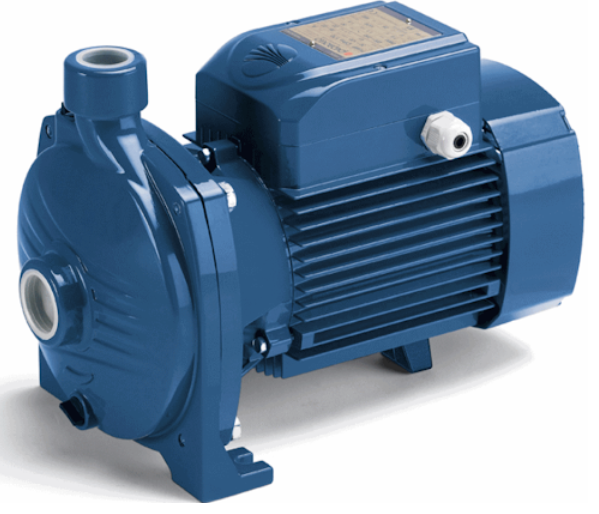For private water supply, two types of pumps are most often used - vortex and centrifugal. Such devices are installed in domestic premises in order to drive water through pipes, raise it from the bottom of the well, and sometimes they are also found in industrial premises.
Now we will figure out which pump is better - vortex or centrifugal, design features of centrifugal and vortex pumps, the principle of operation of a centrifugal pump, how a vortex pump works, advantages and disadvantages of centrifugal / vortex pumps. At the end of the article you will find a table with pump selection criteria.
Features of centrifugal and vortex pumps. Types of pumps. How centrifugal/peripheral pumps work. What is the difference between a centrifugal pump and a vortex pump.
The principle of operation of all pumps is the same - liquid / gas enters from one side, it is pushed out from the other, receiving kinetic energy from the pump mechanism.

Pump mechanisms may be different. According to them and the type of energy transfer from the mechanism, the following types of pumps are distinguished:
- Water wheel
- Archimedes screw
- Piston
- winged
- Lamellar-rotary
- Gear with external gearing
- Gear with internal gearing
- Cam with sickle-shaped rotors
- impeller
- Sinus
- screw
- Peristaltic
- Vortex
- Centrifugal
- And others
In centrifugal pumps, the liquid/gas is fed directly into the center of the impeller. The flow is cut and divided into two parts - up and down. A wheel with a small number of blades rotates these streams. The wheel itself rotates the auger from the motor. The motor is powered by electricity. The inside of the pump is pressurized and the liquid/gas is pushed by force into the side outlet pipe.
In vortex pumps, water is supplied not to the wheel, but along the rotation of the blades, and here there are more blades than in a centrifugal pump. The motor still rotates the auger, on which the wheel with blades is installed. Water moves in the direction of the blades and is pushed out by them into the outgoing pipe. The latter is usually located parallel to the incoming one.
Vortex and centrifugal pumps differ in the way water is supplied, the number of blades. Because of this, other differences emerge - vortex ones have low efficiency (45%), centrifugal ones are sensitive to air and solid particles - they can break / jam.

The content of the article
- Advantages and disadvantages
- Which is better: vortex pump or centrifugal
- Pump Selection Criteria Table
Advantages and disadvantages
Centrifugal pumps:
- High-performance, powerful and efficient (they pump water quickly, the productivity of household models reaches 1200 liters per hour, production models - up to 4000 liters per hour).
- High head of outgoing water.
- They last a long time and rarely break.
But:
- Designed only for heavy loads (if there is little water, it will not be able to exit through the pipe).
- Sensitive to air (if air gets inside, the device will stop).
- They require a stable power supply (power surges will quickly disable the device).
- Expensive.
Vortex:
- Cheaper.
- Easier to repair.
- No matter the air.
- Designed for medium loads / low productivity.
- The maximum pressure is 240 m.
- Low power (maximum 25 kilowatts).
- Low efficiency (45%).
Which is better: vortex pump or centrifugal
If you take the characteristics, centrifugal pumps are better. But it all depends on the situation:
For domestic use, we recommend a vortex pump. Its capacity will be 400-1000 liters per hour, it is not afraid of air bubbles, and they can be installed at depths below 9 meters.
If you need a more powerful device - up to 1500 liters per hour, use a centrifugal pump. But it should be installed no deeper than 9 meters, and at the same time there should be an intense load.
Pump Selection Criteria Table
| Centrifugal models | Vortex models | |
| Silent | Yes | No |
| Dimensions | Large | Medium and small |
| Maximum depth for efficient work | up to 9 meters | up to 20 meters |
| Can it be installed at home | Yes | Yes, but it will make a lot of noise (not recommended) |
| Efficiency | 97% | Up to 45% |
| Sensitivity to air bubbles | Yes | No |
| Maximum performance | 1500 liters per minute (household) 4000 l/m (production) |
1000 liters per minute |


